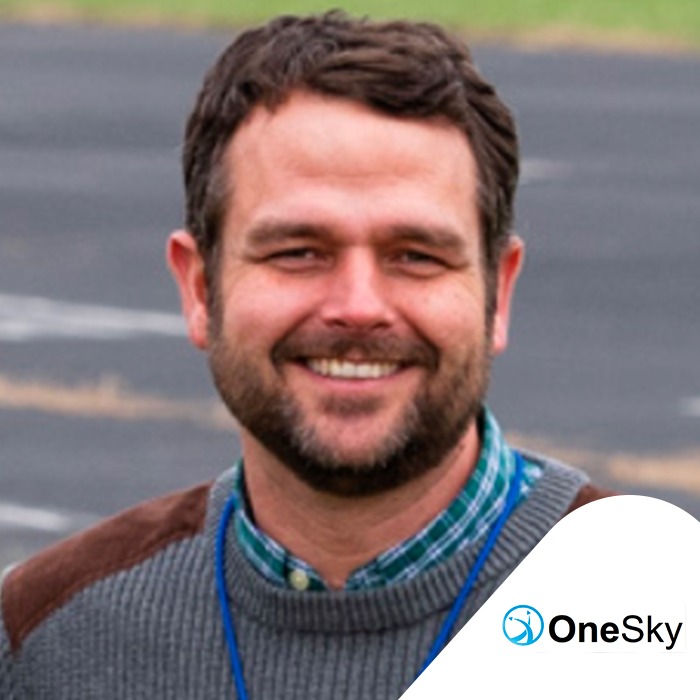
Why are we doing Connected Skies – why is it important to bring the worlds of UTM and telecommunications together?
First, because there is no such thing as a fully autonomous drone; all drones will need some form of connectivity. The only reasonable methodology of doing that is via an existing telecommunications link. So for multiple reasons we need to bring these worlds together to create proper network-based remote ID (for example, the US Federal Aviation Administration just made “networked RemoteID” a must have requirement for every drone in their proposed ruling end of December for the USA); to get proper command and control connectivity and to make sure that for some specific use cases – such as first-responder feedback into emergency command and control centres – we can provide live payload connectivity. And the only way of providing that is through existing telecommunication networks.
Second, for safety reasons every drone flight requires an assessment of the ground-risks for people, which means we need information about where people are at a given point in time. Information that is available to telecommunication providers.
The telecommunications and aviation industries are both trillion-dollar businesses, but they have no connectivity. So far. Probably the only common ground is when you get onto an aircraft and you are told to turn off your mobile phone!
But with automated drone handling and traffic management that will have to change.
What should we be doing in five years’ time that we can’t do now?
In five years we’re going to see a regulatory lifting of the limitations that we have today. What we envision today will be live, real and flying up there.
Can you give me examples of how this connectivity will work in practice?
Let’s take firefighters. If you have an accident on the motorway there will be firefighting trucks going out there without knowing the details of what the crash scene looks like – is there one car, two, five, ten? How many people are injured? What’s the scale of the incident? Which side of the motorway, as they may be separated by crash barriers? If you have an autonomous or automatic drone service available, you can have a drone deployed flying BVLOS to the accident equipped with all sorts of sensing and video handling equipment. First you will need to get permission to fly there – which will be automated – then you will need to connect to the UTM system that manages the flight and then the drone will fly to the incident and stream the live information into the mission control centre. With that the emergency services can save lives, cost and time because they will significantly enhance the deployment of resources. You will have an end-to-end service that will be automated. But you will need connectivity to remotely identify the drone, for command-and-control and for video streaming. Today’s networks are not designed to have a video streamed at say 120 metre altitude.
In five years we will also see what is called “network slicing connectivity”, driven by the introduction of the 5G core, which will enable a whole new level of service assurance for drones.
In other use-cases I fully expect to see industrial inspections. We will have automated drone services to essentially replace light aircraft and helicopters to automatically inspect pipelines and motorway infrastructure. I also expect delivery services being real.
What would you want to see come out of the Barcelona Connected Skies event?
Today, many mobile network operators know little to nothing about aviation. And vice versa. The aviation industry considers connectivity a given – which is entirely not the case because these communications networks are not designed for aviation purposes and cellular networks are highly dynamic. What I want to see is cellular operators becoming aware that this market is interesting for them because it represents a monetisation opportunity way beyond just the connectivity part. Because the data that they have is hugely valuable to the aviation industry. They can provide many additional services beyond connectivity, even in some cases we see them becoming some sort of U-space providers themselves. I think this is a significant monetisation opportunity. It’s an industrial opportunity partnership (IOP) where the IOP application is moving 3D opportunity for transporting something from A to B or developed into more intensive sensor technology applications to solve real-world problems.
With our AirborneRF solution we can help the mobile network operators not only to answer the question on where it is safe to fly in their radio network, we help them monetize their data, and connect with the aviation eco-system. We have already deployed AirborneRF at tier-one customers around the world, and can help mobile network operators based on that experience.
There are so many, many business cases that need to be identified and discussed.
Dr. Thomas Neubauer, VP Innovations of TEOCO (& Co-Founder of Dimetor)
For more information on GUTMA’s Connected Skies webinars visit: https://gutma.org/cs-webinars-2020/







